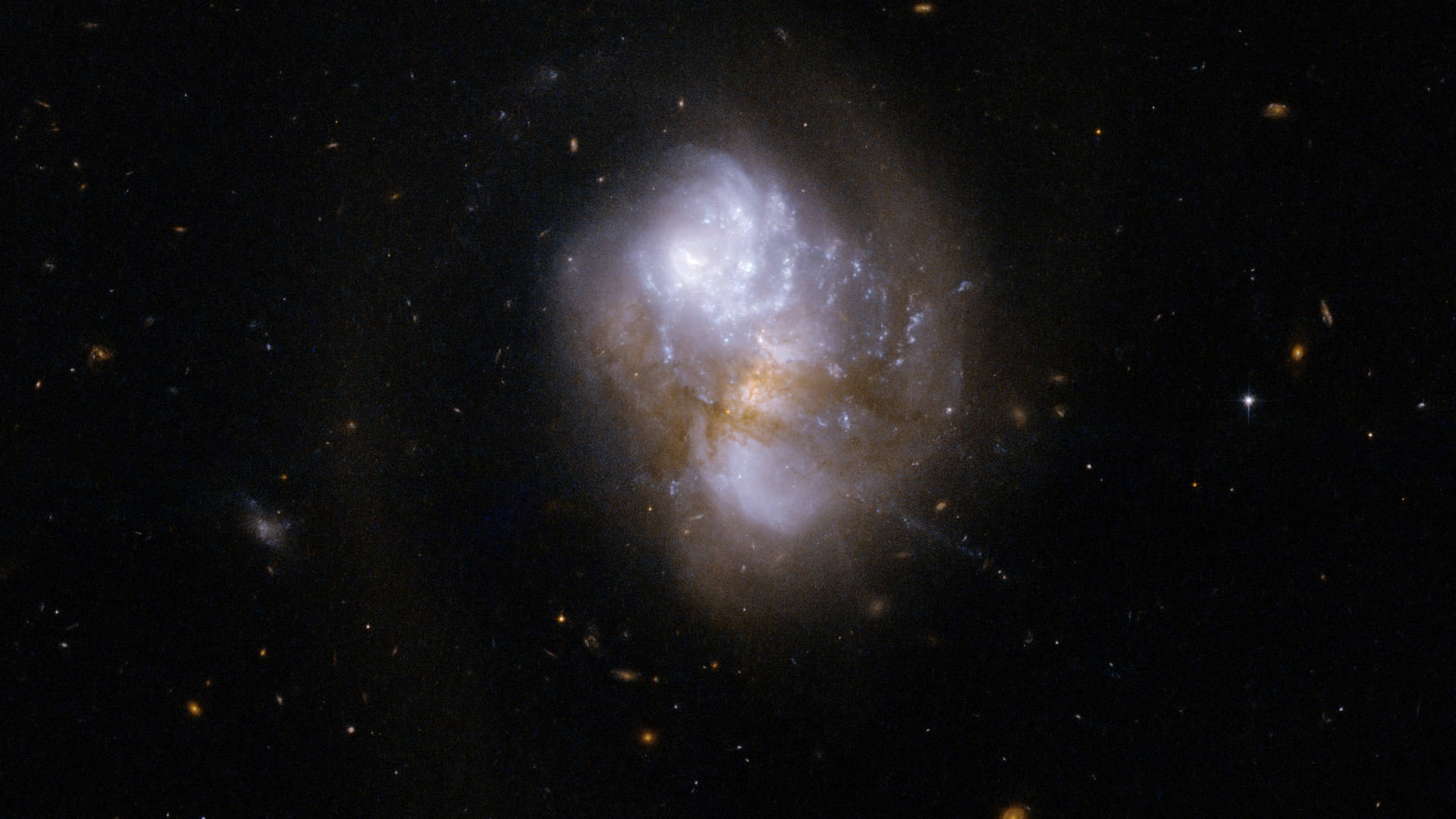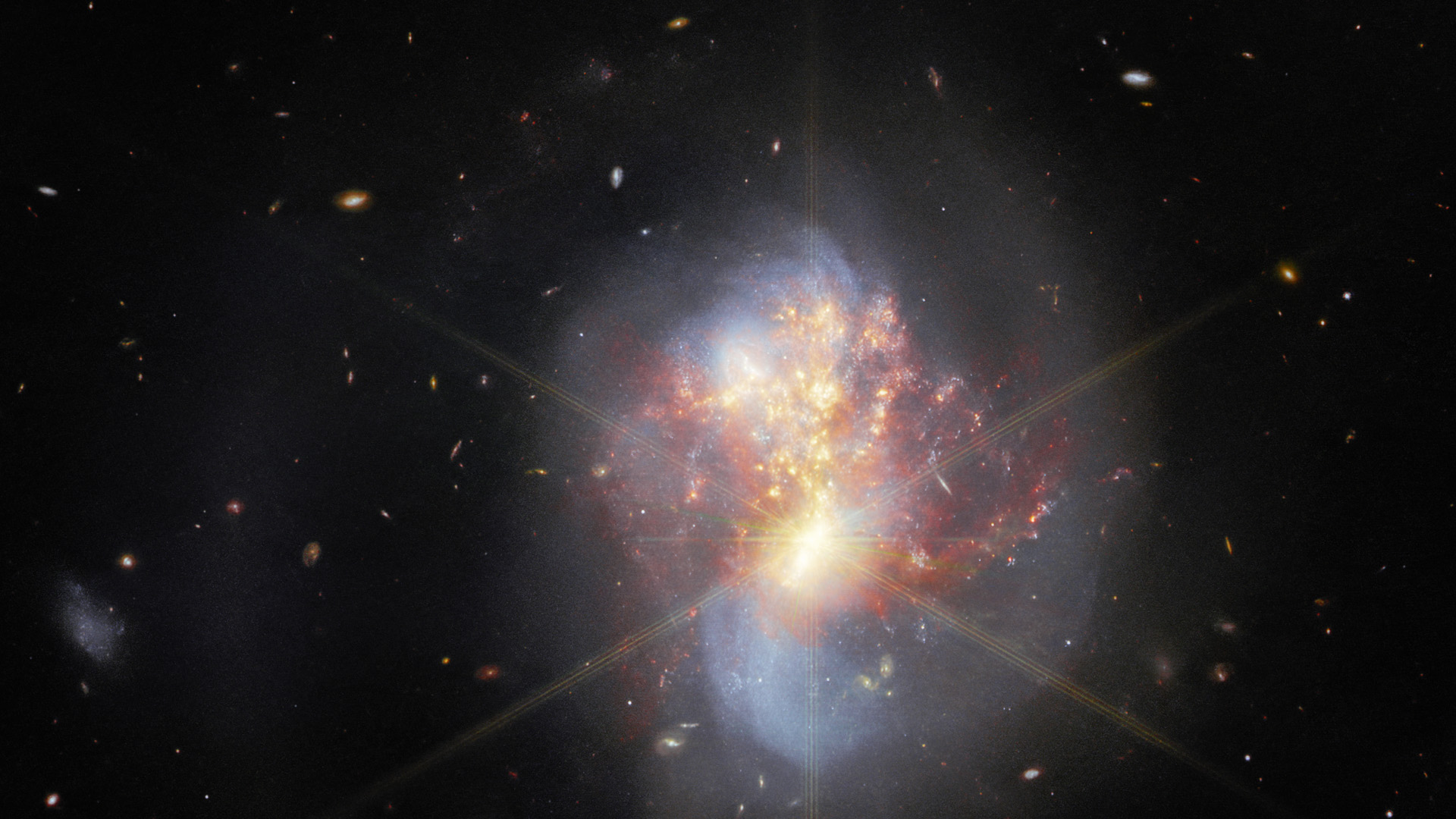James Webb Space Telescope reveals hidden star formation in pair of colliding galaxies (photo)
Webb was able to pierce the galaxies' dusty veil.
The James Webb Space Telescope photographed a collision of two galaxies that's sparking a flurry of star formation invisible to other telescopes.
The wave of star birth was triggered by the encounter of two galaxies known by the common name IC 1623. The merging couple is producing stars at a rate 20 times faster than that of our own Milky Way galaxy, scientists said.
The galactic clash was previously imaged by other telescopes, including Webb's predecessor the Hubble Space Telescope, which specializes in detecting optical light (the kinds of wavelengths visible to the human eye). But because IC 1623 is wrapped in a thick shield of dust, astronomers had not been able to peer deeper inside the galaxies to see the forming stars.
Related: Why the James Webb Space Telescope's amazing 'Pillars of Creation' photo has astronomers buzzing
The James Webb Space Telescope, with its dust-penetrating infrared gaze, pierced through the shroud with ease, revealing a luminous center that is giving off so much infrared light (essentially heat) that the galaxy produces the trademark eight-spike refraction pattern usually seen in Webb's images containing bright stars.
When compared to an earlier image of IC 1623 by Hubble, Webb's view reveals a completely new layer in the merging galaxies' structure, which is depicted as the central lump of bright red and orange material in the image.

The two galaxies in this image are some 270 million light-years away from Earth in the constellation Cetus. Astronomers believe that the merger may also be producing a supermassive black hole, which, however, is not visible in this image.
Breaking space news, the latest updates on rocket launches, skywatching events and more!
The image was created from a combination of data captured by three of Webb's four instruments, the MIRI and NIRCam cameras and the NIRSpec spectrometer, the European Space Agency, which released the image on Tuesday (Oct. 25), said in a statement.
A study describing the observations was recently published in the Astrophysical Journal.
Follow Tereza Pultarova on Twitter @TerezaPultarova. Follow us on Twitter @Spacedotcom and on Facebook.

Tereza is a London-based science and technology journalist, aspiring fiction writer and amateur gymnast. She worked as a reporter at the Engineering and Technology magazine, freelanced for a range of publications including Live Science, Space.com, Professional Engineering, Via Satellite and Space News and served as a maternity cover science editor at the European Space Agency.

